The Versatile Applications of Pad Mounted Transformers in Modern Infrastructure?
Have you ever wondered about those green boxes in your neighborhood? They’re not just for decoration. These pad mounted transformers are the unsung heroes of our modern infrastructure, powering everything from homes to hospitals.
Pad mounted transformers are versatile electrical devices used in various settings including residential areas, commercial complexes, industrial parks, renewable energy facilities, urban developments, educational institutions, healthcare facilities, and smart cities. They provide efficient, safe, and reliable power distribution across modern infrastructure.
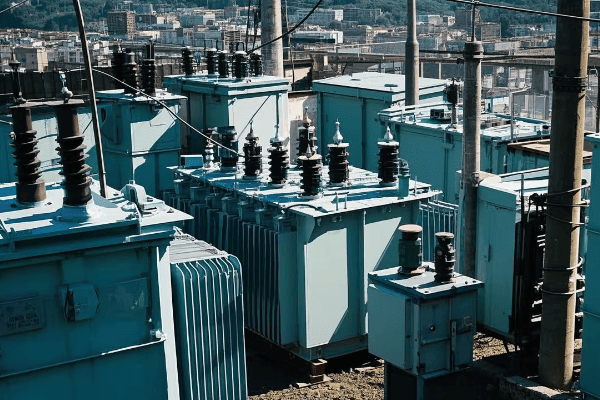
As an electrical engineer with over 20 years of experience, I’ve seen firsthand how pad mounted transformers have revolutionized power distribution. They’re not just another piece of equipment; they’re the backbone of our electrical infrastructure. Let’s explore the diverse applications of these transformers and how they’re shaping our modern world.
Residential Areas: Powering Our Neighborhoods Efficiently?
Have you ever experienced a power outage in your neighborhood? The reliability of your home’s electricity often depends on pad mounted transformers. These unassuming green boxes play a crucial role in keeping our lights on and our appliances running.
In residential areas, pad mounted transformers step down high voltage power to levels suitable for homes. They provide efficient, safe, and aesthetically pleasing power distribution, replacing traditional pole-mounted transformers in many modern neighborhoods.
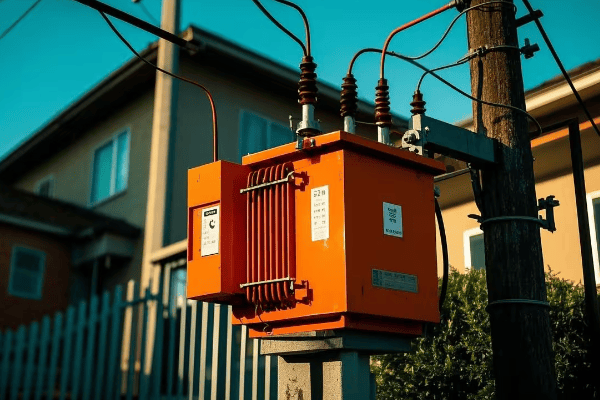
Let’s dive deeper into how these transformers power our neighborhoods:
Bringing Power to Your Doorstep
-
Voltage Transformation:
- Steps down 7.2kV or 14.4kV to 120/240V for residential use
- Enables safe use of electricity in homes
-
Aesthetic Integration:
- Low-profile design blends with landscaping
- Reduces visual clutter compared to pole-mounted transformers
-
Safety Features:
- Locked enclosures prevent unauthorized access
- Designed to withstand environmental factors
I remember a project where we replaced old pole-mounted transformers with pad mounted units in a suburban area. The residents were initially skeptical, but after the installation, they were amazed at the improved reliability and the uncluttered view. One homeowner told me, "I didn’t realize how much those poles affected our street’s appearance until they were gone."
Here’s a comparison of residential power distribution methods:
| Feature | Pad Mounted Transformers | Pole Mounted Transformers |
|---|---|---|
| Aesthetics | Blends with landscape | Visible on poles |
| Maintenance Access | Ground level, easier | Requires bucket trucks |
| Safety | Locked enclosures | Exposed to elements |
| Lifespan | 30-40 years | 20-30 years |
| Efficiency | Higher due to shorter lines | Lower due to longer lines |
Commercial Complexes: Meeting High Energy Demands Discreetly?
Ever wondered how large shopping malls or office buildings manage their massive power needs without visible electrical equipment? The answer often lies in pad mounted transformers strategically placed around the property.
Pad mounted transformers in commercial settings handle high energy demands while maintaining a low profile. They provide the necessary power for lighting, HVAC systems, elevators, and various electrical equipment in shopping centers, office buildings, and other commercial complexes.

Let’s explore how these transformers support our bustling commercial areas:
Powering Business Without Disruption
-
High Capacity:
- Typically range from 750 kVA to 2500 kVA
- Can handle the diverse power needs of multiple businesses
-
Strategic Placement:
- Often located in basements or outdoor service areas
- Minimizes impact on valuable commercial space
-
Reliability Features:
- Built-in cooling systems for consistent performance
- Advanced monitoring for quick fault detection
I once worked on a project for a large shopping mall that was experiencing frequent power issues. We installed several high-capacity pad mounted transformers around the property. The result was not only improved power reliability but also freed up space that was previously occupied by an outdated indoor substation. The mall owner was thrilled with the extra leasable area they gained.
Here’s a breakdown of transformer applications in commercial settings:
| Commercial Setting | Typical Transformer Size | Key Benefits |
|---|---|---|
| Small Retail Stores | 300-500 kVA | Compact size, Low noise |
| Office Buildings | 750-1500 kVA | High efficiency, Smart monitoring |
| Shopping Malls | 1500-2500 kVA | High capacity, Discreet placement |
| Hotels | 1000-2000 kVA | Reliable power for 24/7 operation |
| Data Centers | 2000-3000 kVA | Redundant systems, High reliability |
Industrial Parks: Delivering Robust Power for Manufacturing?
Have you ever wondered how factories and warehouses in industrial parks get the massive amount of power they need? Pad mounted transformers play a crucial role in keeping these energy-hungry facilities running smoothly.
In industrial parks, pad mounted transformers provide the high-capacity, reliable power needed for heavy machinery and manufacturing processes. They offer flexible installation options, efficient power distribution, and can handle the harsh conditions often found in industrial environments.
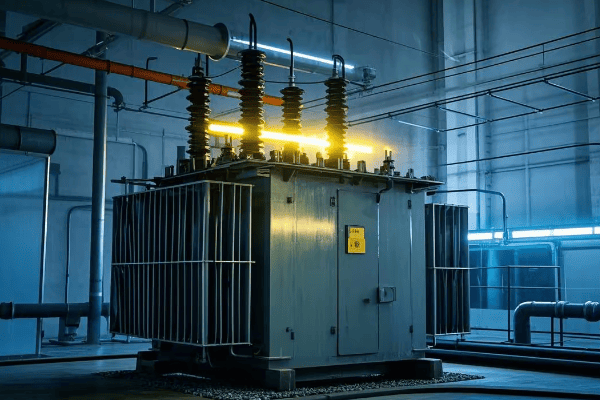
Let’s delve into how these transformers support our industrial backbone:
Powering the Engines of Industry
-
High Power Capacity:
- Often rated 2500 kVA and above
- Can handle large, fluctuating loads typical in manufacturing
-
Robust Design:
- Built to withstand harsh industrial environments
- Resistant to dust, chemicals, and extreme temperatures
-
Customization Options:
- Tailored to specific voltage and power requirements
- Can include special features like harmonic mitigation
I recall a project for a large automotive manufacturing plant. They needed a power solution that could handle their massive presses and welding equipment. We installed a series of 3000 kVA pad mounted transformers with custom voltage taps. The plant manager was impressed by how these compact units could deliver such high power without taking up valuable floor space.
Here’s a look at transformer applications in different industrial settings:
| Industry Type | Typical Power Needs | Transformer Features |
|---|---|---|
| Automotive Manufacturing | Very High (3000+ kVA) | Harmonic mitigation, Load management |
| Food Processing | Medium to High (1000-2500 kVA) | Stainless steel enclosures, Strict safety standards |
| Chemical Plants | High (2000-3000 kVA) | Corrosion-resistant materials, Enhanced safety features |
| Warehouses & Logistics | Medium (750-1500 kVA) | Energy efficient, Smart monitoring for demand fluctuations |
| Metal Fabrication | High (2000-3000 kVA) | Surge protection, High short-circuit strength |
Renewable Energy Integration: Supporting Green Power Sources?
Ever wondered how solar farms and wind turbines connect to the grid? Pad mounted transformers are the unsung heroes in the renewable energy revolution, playing a crucial role in integrating green power into our electrical systems.
Pad mounted transformers in renewable energy applications step up the voltage from solar panels or wind turbines to match grid levels. They handle the variable nature of renewable sources, provide necessary isolation, and enable efficient transmission of green energy to the power grid.

Let’s explore how these transformers support our transition to cleaner energy:
Bridging Green Energy to the Grid
-
Voltage Step-Up:
- Increases low voltage from renewables to grid-compatible levels
- Typically from 600V-1000V to 12kV-36kV
-
Bi-Directional Power Flow:
- Handles power flow to and from the grid
- Essential for net metering and grid stability
-
Special Design Features:
- Enhanced protection against voltage fluctuations
- Often includes advanced monitoring for remote management
I remember working on a large wind farm project where we used specially designed pad mounted transformers. These units had to handle the variable output of the turbines and step up the voltage for long-distance transmission. The farm operator was amazed at how these transformers could efficiently manage the power from 20 different turbines, each with its own generation pattern.
Here’s a comparison of transformer applications in different renewable energy settings:
| Renewable Source | Typical Transformer Size | Key Features |
|---|---|---|
| Solar Farm (Utility Scale) | 1000-2500 kVA | High efficiency, Thermal management |
| Wind Farm | 2000-3000 kVA | Robust design for outdoor conditions, Harmonic mitigation |
| Small Solar Installation | 100-500 kVA | Compact design, Smart grid compatibility |
| Biomass Plant | 1500-2500 kVA | Corrosion-resistant materials, Load-tap changing |
| Hydroelectric (Small Scale) | 500-1500 kVA | Moisture-resistant design, Overload capacity |
Urban Development: Transforming Cityscapes with Underground Power?
Have you ever noticed how modern city centers have fewer visible power lines? The secret often lies beneath your feet, where pad mounted transformers play a crucial role in underground power distribution.
In urban developments, pad mounted transformers enable efficient underground power distribution. They eliminate the need for unsightly overhead lines, improve reliability, and contribute to cleaner, more aesthetically pleasing cityscapes while ensuring power reaches every building.

Let’s dive into how these transformers are reshaping our urban environments:
Powering Cities from Below
-
Space Efficiency:
- Compact design fits in tight urban spaces
- Can be partially or fully underground
-
Aesthetic Improvement:
- Eliminates overhead lines and poles
- Can be disguised or integrated into urban design elements
-
Reliability Enhancement:
- Protected from weather-related outages
- Easier to maintain and upgrade
I once worked on a project to revitalize a historic downtown area. We replaced the old, unsightly overhead lines with an underground system using pad mounted transformers. The transformation was remarkable. Not only did we improve power reliability, but we also uncovered beautiful architectural features that were previously obscured by power lines. The city planner told me it was like rediscovering the city’s heritage.
Here’s a look at how pad mounted transformers benefit different urban settings:
| Urban Setting | Transformer Application | Benefits |
|---|---|---|
| City Centers | Underground vaults | Preserves aesthetics, Increases property values |
| Residential Neighborhoods | Low-profile surface units | Improves safety, Reduces visual clutter |
| Parks and Public Spaces | Camouflaged designs | Maintains natural beauty, Provides power for events |
| Historic Districts | Custom enclosures | Preserves architectural integrity, Meets modern power needs |
| New Developments | Integrated planning | Enables smart city features, Futureproofs power infrastructure |
Educational Institutions: Ensuring Reliable Power for Learning Environments?
Ever wondered how large university campuses or sprawling school districts manage their complex power needs? Pad mounted transformers are often the unsung heroes behind the scenes, keeping the lights on and computers running in our educational institutions.
In educational settings, pad mounted transformers provide reliable, efficient power distribution for diverse needs. From powering high-tech research labs to ensuring comfortable learning environments, these transformers support the electrical backbone of schools and universities.
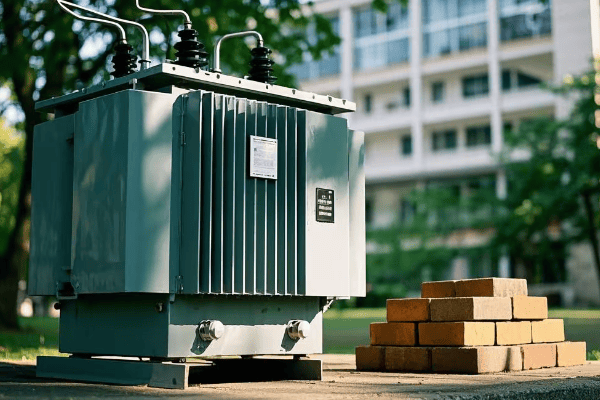
Let’s explore how these transformers support our centers of learning:
Powering the Pursuit of Knowledge
-
Diverse Load Handling:
- Manages varying loads from classrooms, labs, and administrative buildings
- Supports high-power equipment in research facilities
-
Reliability and Safety:
- Ensures uninterrupted power for critical systems
- Enhanced safety features for public areas
-
Scalability:
- Easily upgraded to meet growing campus needs
- Can be integrated with renewable energy sources
I remember a project at a large state university where we overhauled their entire power distribution system. We installed a network of smart pad mounted transformers across the campus. The facilities manager was impressed by how we could now monitor and manage power usage in real-time, leading to significant energy savings. During a subsequent heatwave, the system automatically adjusted to handle the increased load from air conditioning without any disruptions.
Here’s a breakdown of transformer applications in different educational settings:
| Educational Setting | Typical Power Needs | Key Transformer Features |
|---|---|---|
| K-12 Schools | 300-750 kVA | Quiet operation, Safety locks |
| Small Colleges | 750-1500 kVA | Energy efficient, Smart monitoring |
| Large Universities | 1500-3000 kVA | High capacity, Load management |
| Research Institutions | 2000-5000 kVA | Precision power quality, Surge protection |
| Vocational Schools | 500-1000 kVA | Flexible configuration, Robust design |
Healthcare Facilities: Providing Uninterrupted Power for Critical Care?
Have you ever considered what keeps life-saving equipment running in hospitals during a power outage? Pad mounted transformers play a vital role in ensuring that healthcare facilities have a constant, reliable power supply, even in the most critical situations.
In healthcare settings, pad mounted transformers provide essential, uninterrupted power for critical medical equipment, life support systems, and overall facility operations. They offer high reliability, quick isolation capabilities, and often work in conjunction with backup generators to ensure continuous patient care.
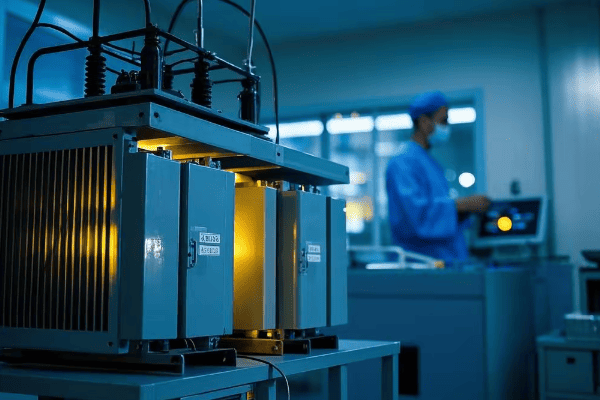
Let’s delve into how these transformers support our healthcare infrastructure:
Powering Life-Saving Operations
-
High Reliability Design:
- Built with redundant systems to prevent failures
- Rapid switching capabilities for backup power
-
Clean Power Output:
- Provides stable, clean power for sensitive medical equipment
- Includes harmonics filtration for precise diagnostics
-
Emergency Preparedness:
- Integrates with emergency power systems and generators
- Allows for quick isolation of non-critical loads during emergencies
I once worked on upgrading the power system for a major hospital. We installed a series of advanced pad mounted transformers with smart monitoring capabilities. During a severe storm that knocked out power to much of the city, these transformers seamlessly switched to backup generators, ensuring that all critical systems remained operational. The hospital administrator later told me that this system potentially saved lives that night.
Here’s an overview of transformer applications in various healthcare settings:
| Healthcare Facility | Typical Power Needs | Critical Features |
|---|---|---|
| Large Hospitals | 3000-5000 kVA | Redundant systems, Rapid transfer switching |
| Outpatient Clinics | 500-1000 kVA | Stable power output, Energy efficiency |
| Medical Research Labs | 1500-3000 kVA | Precision power quality, Surge protection |
| Nursing Homes | 750-1500 kVA | Reliable operation, Quiet performance |
| Emergency Care Centers | 1000-2000 kVA | Fast response time, Integration with backup systems |
Smart Cities: Enabling Intelligent Power Distribution Networks?
Ever imagined a city where the power grid thinks for itself? Smart cities are becoming a reality, and pad mounted transformers are at the heart of this revolution, enabling intelligent power distribution that responds to real-time demands.
In smart cities, pad mounted transformers are equipped with advanced sensors and communication capabilities. They enable real-time monitoring, automated load balancing, and integration with renewable energy sources, forming the backbone of an intelligent, efficient, and responsive power grid.
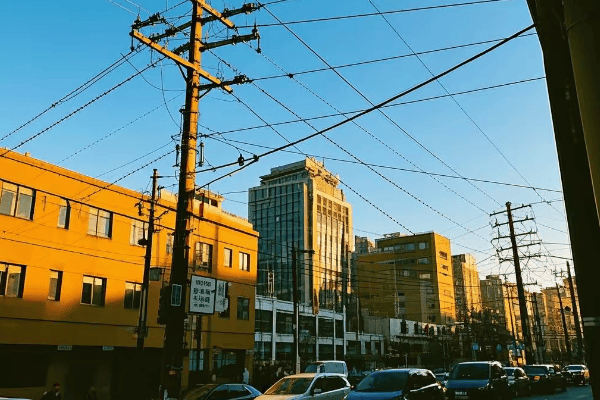
Let’s explore how these smart transformers are shaping the cities of the future:
Building the Intelligent Grid
-
Real-Time Monitoring:
- Continuous tracking of power quality and usage
- Immediate detection of faults or inefficiencies
-
Automated Load Balancing:
- Adjusts power distribution based on demand
- Optimizes energy flow to reduce waste
-
Integration with Renewable Sources:
- Manages variable inputs from solar and wind
- Enables two-way power flow for prosumers
-
Predictive Maintenance:
- Uses data analytics to predict potential issues
- Schedules maintenance before failures occur
I recently worked on a smart city project where we installed a network of intelligent pad mounted transformers throughout a new urban development. The system’s abilityto adapt to changing power demands was impressive. During a heatwave, the system automatically redirected power to areas with high air conditioning use, preventing overloads and maintaining comfort for residents. The city’s energy manager was thrilled with the 15% reduction in overall energy consumption achieved through this smart distribution.
Here’s a breakdown of how smart transformers contribute to different aspects of a smart city:
| Smart City Application | Transformer Role | Benefits |
|---|---|---|
| Energy Management | Real-time load monitoring | Reduced energy waste, Lower costs |
| Electric Vehicle Charging | Dynamic power allocation | Efficient use of grid capacity |
| Public Lighting | Automated brightness control | Energy savings, Improved safety |
| Renewable Integration | Managing variable inputs | Increased green energy usage |
| Disaster Response | Rapid fault isolation | Faster power restoration |
Conclusion
Pad mounted transformers play a crucial role across various sectors of modern infrastructure, from powering homes to enabling smart cities. Their versatility, efficiency, and adaptability make them indispensable in our increasingly electrified world.
Free CHBEB Transformer Catalog Download
Get the full range of CHBEB transformers in one catalog.
Includes oil-immersed, dry-type, pad-mounted, and custom solutions.
Quick Message
Request A free quote
We'd like to work with you
- +86 15558785111
- [email protected]
- +86 15558785111
What We Do
CHINA BEI ER BIAN (CHBEB) GROUP, with 218 million in registered capital, originated from Beijing Beierbian Transformer Group. Headquartered in Beijing for R&D, it operates major production bases in Nanjing and Yueqing, producing high-quality products.
Latest Product
address
BeiJing
No 3,RongJing East Road,BeiJing Economic Technological Development Area,BeiJing,China
JiangSu
No 7️Xiangfeng Road,Jiangning,NanJing,JiangSu,China
WenZhou
No.211, Wei 16 Road, Industrial Zone, Yueqing, Wenzhou, Zhejiang, China.
XiangYang Industrial Zone ,YueQing,WenZhou,ZheJiang,China
contact us
- [email protected]
- +86 13057780111
- +86 13057780111
- +86 15558785111
Copyright © Bei Er Bian Group


